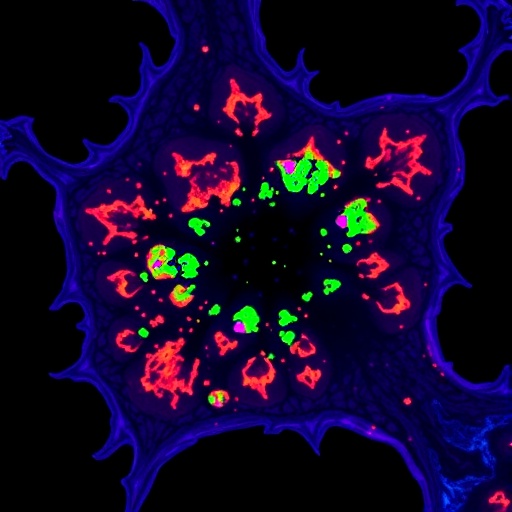Cell death is an essential physiological process for all multicellular organisms. Throughout life, cells in many tissues die naturally and are replaced by new cells. A proper balance between the death and production of new cells is important for the maintenance of healthy tissue function and for regeneration after injury. Increased cell production coupled with reduced cell death can lead to tumor development. On the other hand, excessive cell death can cause tissue damage and disease.
Normally our tissues are healthy, but some individuals develop inflammation and disease. "What causes inflammation?" asks Manolis Pasparakis, Professor at the Institute for Genetics of the University of Cologne, who is the senior author of the paper published on November 7th in Nature. "Can necroptosis be the trigger of inflammation in some cases and how is necroptosis regulated?"
RIPK1 is a protein mainly known as an inducer of necroptosis. Researchers in the group of Manolis Pasparakis generated mice in which the RIPK1 gene was inactivated specifically in skin cells called keratinocytes. "We expected that the lack of RIPK1 would prevent necroptosis – but we observed the opposite. Keratinocytes in these mice died by necroptosis, causing skin inflammation. This was puzzling: How could the removal of RIPK1 cause necroptosis?" asked Snehlata Kumari, one of the three main authors of the paper.
The researchers have now found an answer to this question: they discovered that RIPK1 inhibits another inducer of necroptosis, a protein called ZBP1. Genetic elimination of ZBP1 inhibited necroptosis and inflammation caused by RIPK1 deficiency. "ZBP1 was known as a sensor of DNA that contributes to immunity against some viruses, but so far it has not been implicated in inflammation," commented Chun Kim, who is also a main author of the study.
The researchers asked how RIPK1 can inhibit ZBP1. To answer this question, they used CRISPR gene editing to modify three amino acids in the so called RHIM domain that allows RIPK1 to interact with other proteins regulating necroptosis. Mice expressing this mutant RIPK1 in all cells did not survive after birth. Moreover, the expression of mutated RIPK1 only in keratinocytes caused skin inflammation. Using a combination of genetic and biochemical experiments, the researchers could show that when the RHIM domain of RIPK1 was mutated, ZBP1 triggered necroptosis. This is what caused perinatal death, but also skin inflammation in adult mice. "This was a surprising result. These three amino acids of RIPK1 prevent ZBP1 from inducing necroptosis, and this is essential for mouse survival and the prevention of skin inflammation," said Juan Lin, one of the leading authors of the manuscript.
"We made progress, but many pieces of the greater puzzle remain unclear," says Manolis Pasparakis. "ZBP1 has been known as a viral sensor, and now our results linked it to inflammation and disease. The triggers of chronic inflammation in humans are, in most cases, entirely unclear. Why does inflammation occur in a certain person at a certain moment? Bacterial and viral infections are discussed as possible triggers of chronic inflammation. In our work, we discovered the role of ZBP1 by experimentally altering RIPK1. Now we are wondering whether viruses or bacteria could activate ZBP1 to cause inflammation." The researchers are now working to put the next pieces of the puzzle in place and explore a possible link between ZBP1 and chronic inflammatory diseases in humans.
###
Original publication:
RIPK1 counteracts ZBP1-mediated necroptosis to inhibit inflammation. Juan Lin, Snehlata Kumari, Chun Kim, Trieu-My Van, Laurens Wachsmuth, Apostolos Polykratis & Manolis Pasparakis. Nature, DOI: 10.1038/nature20558
Contact:
Prof. Dr. Manolis Pasparakis
Institute for Genetics and Cluster of Excellence CECAD
Tel. +49 221 478 84351
[email protected]
Peter Kohl
Public Relations Officer
[email protected]
Media Contact
Eva Schissler
[email protected]
49-221-470-4030
@UniCologne
http://www.uni-koeln.de




